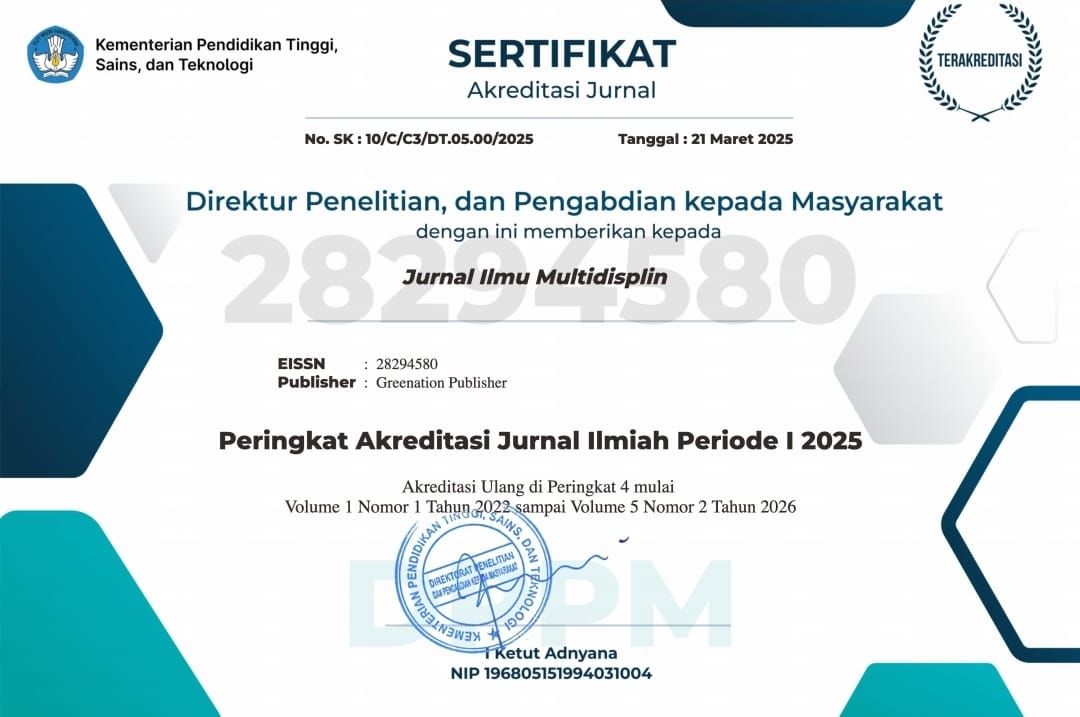Analisis Faktor-Faktor yang Memengaruhi Penerapan Sistem Informasi Manajemen Rumah Sakit (SIMRS) di RSU Mamami Kupang
DOI:
https://doi.org/10.38035/jim.v1i4.134Keywords:
Work Culture, Age, Work Experience, HR Competence, Tool SpecificationsAbstract
This study intends to analyze the factors that influence the implementation of the hospital management information system (SIMRS) at RSU MAMAMI Kupang. The results of inferential statistical analysis show that work culture has no significant impact on the implementation of the hospital management information system (SIMRS); age has no significant effect on the implementation of the hospital management information system (SIMRS); work experience does not have a significant impact on the implementation of the hospital management information system (SIMRS); Tool specifications affect meaningful implementation. The R square adjusted value shows that the coefficient of determination of the SIMRS application variable is 0.780 and the coefficient of determination of the HR Competency variable is 0.705. This value makes it clear that the involvement of work culture variables, age, work experience, HR competencies, tool specifications for the implementation of SIMRS is 78% and the contribution of work culture variables, age and work experience to HR competencies is 70%.
References
Anjani, P. W., & Wirawati, N. G. P. (2018). Pengaruh Usia, Pengalaman kerja, Tingkat Pendidikan dan Kompleksitas Tugas terhadap Efektifitas Pengguna Sistem Informasi Akuntansi. E-journal Akuntansi Universitas Udayana, 22 (3), 2430-2457
Arisandi, F. (2018). Faktor-Faktor Yang Mempengaruhi Produktivitas Karyawan Penyadap di PT. Bridgestone Sumatera Rubber Estate (Studi Kasus Kecamatan Dolok Batu Nanggar, Kabupaten Simalungun).
Ghozali, I. (2011). Aplikasi Analisis Multivariate dengan Program IBM SPSS 20 (Edisi Kelima). Semarang: Universitas Diponegoro
Ghozali, I., & Latan, H. (2015). Partial Least Squares Konsep Teknik dan Aplikasi Menggunakan Program SmartPLS 3.0 (Untuk Penelitian Empiris) (2nd ed.). Semarang: Badan Penerbit Universitas Diponegoro.
Mangkunegara, AA. (2005). Manajemen Sumber Daya Manusia. Cetakan Ketujuh. Bandung: Remaja Rosdakarya
Peraturan Menteri Kesehatan Republik Indonesia Nomor 82 Tahun 2013 tentang Sistem Informasi Manajemen Rumah Sakit.Ranupandojo, H., dan Suad Husnan, 1984, Manajemen Personalia, Edisi III, Yogyakarta: BPFE
Robbins, Stephen P. (2003). Organizational Behaviour Edition 15. New Jersey: Pearson Education
Sugiyono. (2013). Metode Penelitian Administratif. Jakarta: Alfabeta
Triguno. (2004). Budaya Kerja: Menciptakan Lingkungan Yang Kondusif Untuk Meningkatkan Produktifitas Kerja. Jakarta: Golden Trayon Press
Zainal, Veithzal Rivai. (2015). Manajemen Sumber Daya Manusia untuk Perusahaan. Edisi ke-7. Depok: PT. Rajagrafindo.
Kapalawi. (2009). Sistem Informasi Manajemen Rumah Sakit. Avalaible at: http://repository.usu.ac.id/handle/123456789/6836
Lasut, Erly Erilya, dkk. (2017). Analisis Perbedaan Kinerja Pegawai Berdasarkan Gender, Usia dan Masa Kerja (Studi pada Dinas Pendidikan Sitaro). Jurnal EMBA Vol. 5 No. 2 September 2017, Hal. 2771-2780
Muhimma, Izzati. dkk. 2013. Evaluasi Faktor-Faktor Kesuksesan Implementasi Sistem Informasi Manajemen Rumah Sakit di PKU Muhammadiyah Sruweng dengan Menggunakan Metode Hot-Fit. Seminar Nasional Informatika Medis (SNIMed) IV , p. 78.
Nugroho, E. (2008). Sistem Informasi Manajemen. Yogyakarta: Andi Yogyakarta. Nurlifa, A., Kusumadewi, S., & Kariyam. (2014). Analisis Pengaruh User Interface Terhadap Kemudahan Penggunaan Sistem Pendukung Keputusan Seorang Dokter. SNATIF, 333–340.
Permenkes No 82 Tahun 2013 tentang Sistem Informasi Rumah Sakit.
Permenkes No 1171/MENKES/PER/V/2011 tentang Sistem Informasi Rumah Sakit.
Yasin, M. & Priyono, Joko. (2016). Analisis Faktor Usia, Gaji dan Beban Tanggungan terhadap Produksi Home Industri Sepatu di Sidoarjo (Studi Kasus di Kecamatan Krian). Jurnal Ekonomi dan Bisnis Vol. 1 No. 1 Maret 2016
Downloads
Published
How to Cite
Issue
Section
License
You are free to:
- Share— copy and redistribute the material in any medium or format
- Adapt— remix, transform, and build upon the material for any purpose, even commercially.
The licensor cannot revoke these freedoms as long as you follow the license terms.
Under the following terms:
- Attribution— You must give appropriate credit, provide a link to the license, and indicate if changes were made. You may do so in any reasonable manner, but not in any way that suggests the licensor endorses you or your use.
- No additional restrictions— You may not apply legal terms or technological measures that legally restrict others from doing anything the license permits.
Notices:
- You do not have to comply with the license for elements of the material in the public domain or where your use is permitted by an applicable exception or limitation.
- No warranties are given. The license may not give you all of the permissions necessary for your intended use. For example, other rights such as publicity, privacy, or moral rightsmay limit how you use the material.




























